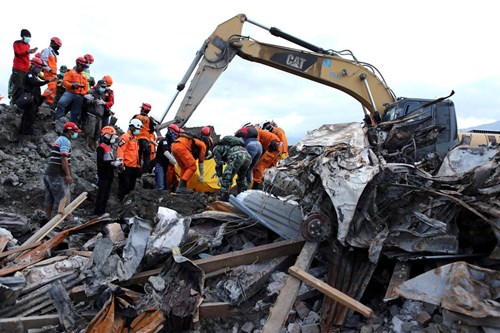    |
 |
|
Rescue workers pull a body from the rubble of a destroyed mosque at Balaroa neighborhood hit by the earthquake and liquefaction in Palu. Photo: Reuters |
WB CEO Kristalina Georgieva unveiled the funds on October 14 on Indonesia’s Bali island, where the WB and the International Monetary Fund (IMF) have been holding their annual meetings.
Georgieva said the funds being made available in the form of loans could be used for reconstruction but are also intended to help Indonesia build resilience, so it would be better prepared in the face of future disasters.
A 7.5-magnitude quake and a subsequent tsunami ravaged Palu city in Central Sulawesi province on September 28, killing 2,073 people and leaving around 5,000 others missing.
Nearly 90,000 people were displaced by the quake, forcing them into evacuation centers across the rubble-strewn city. Officials said it could be two years before all the homeless are found permanent accommodation.
Clean drinking water and medical supplies remains a very real concern for 200,000 people in urgent need.
Indonesia is frequently struck by earthquakes, volcanic eruptions and tsunamis because of its location on the "Ring of Fire", an arc of volcanoes and fault lines in the Pacific Basin.
A series of earthquakes in July and August killed nearly 500 people on the holiday island of Lombok, hundreds of kilometers southwest of Sulawesi.
In 2004, a substantial earthquake off the northern Indonesian island of Sumatra triggered a tsunami across the Indian Ocean, killing 220,000 people in 13 countries, including more than 168,000 in Indonesia.
Source: VNA